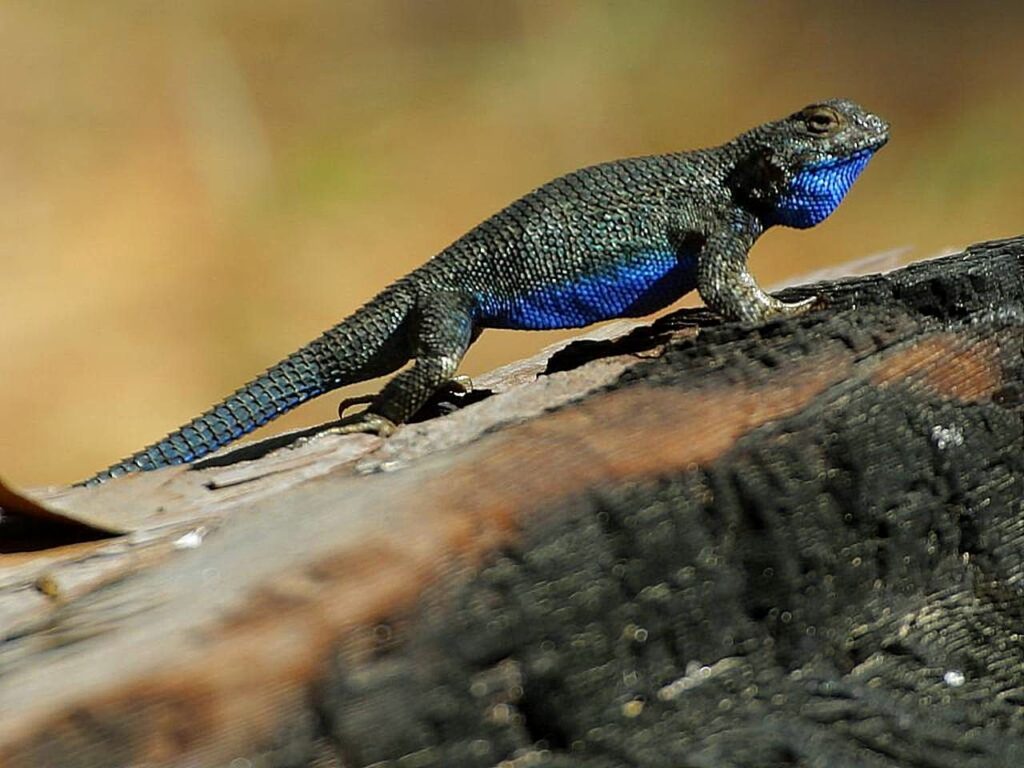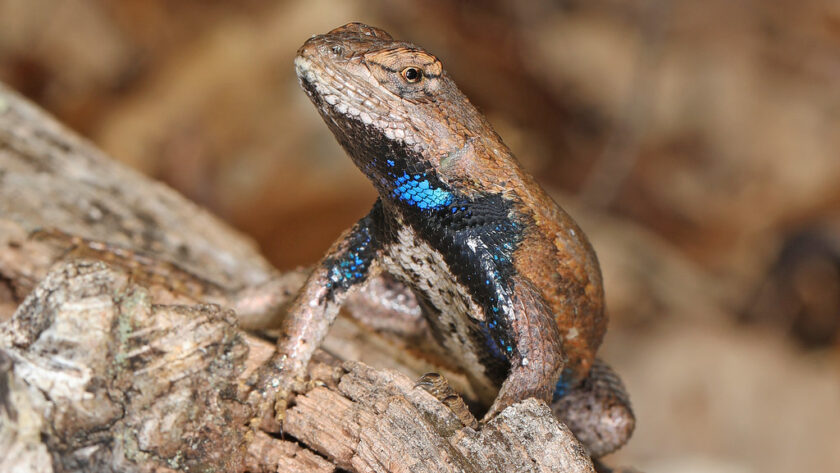Have you ever heard of the Blue Belly Lizard?
This amazing creature has been shrouded in mystery for centuries, with many wondering if the rumors of its poisonous nature are true.
Today, we’ll dive into the truth behind this fascinating animal and discover whether it is really as dangerous as people believe to answer the a commune question: are blue belly lizards poisonous?
From discovering what makes them so unique to uncovering myths that have been passed down through generations, you won’t want to miss out on learning all there is to know about these captivating creatures.
So buckle up and let’s get started on our journey into this incredible reptile!
Table of Contents
Overview of the Blue Belly Lizard

You may have heard of them, but what do you really know about the blue-bellied critter?
The Blue Belly Lizard is a species of lizards that are native to the western United States. They can be found in Southern California, Arizona, Nevada and New Mexico.
These small reptiles usually measure between 3-5 inches long and can live up to 8 years. They have bright blue bellies with brown or grey stripes along their back side.
The Blue Belly Lizard has specific dietary needs and habitat requirements that must be met for them to stay healthy. They feed mainly on insects such as crickets, mealworms, wax worms and locusts.
As far as habitats go, they need an area with plenty of rocks or logs to hide under during the day since they are nocturnal creatures; they also need access to a water source so it’s important to provide them with a shallow dish of water each day.
Additionally, these lizards require UVB lighting that should be left on for 12 hours a day in order for them to synthesize Vitamin D3 in their diet.
The Rumors and Legends
Rumors and legends about these creatures have been circulating for years, suggesting there may be more to their story than meets the eye!
Cultural superstitions and historical folklore surrounding blue belly lizards abound, with many stories claiming they’re highly poisonous. Some say that when a person steps on or otherwise disturbs a blue belly lizard, the creature will release a poison spray from its tail when it’s frightened. Other rumors suggest that consuming any part of the lizard can make one very ill.
The truth is that while these reptiles are capable of releasing an unpleasant-smelling substance from their tails as a defense mechanism, this smell doesn’t contain any toxins or poisons.
The only danger presented by these creatures is their sharp claws and teeth, which can cause minor injuries if handled improperly. As far as their toxicity goes, there’s no evidence to suggest that blue belly lizards are in any way poisonous or pose any serious threat to humans or other animals.
Are Blue Belly Lizards Poisonous: The Facts
Many have wondered if the tales of these scaly creatures are true, but now it’s time to find out the real story.
When it comes to blue belly lizards, there are some facts that stand out:
- They get their name from their bright blue underside
- They require a dry habitat with plenty of rocks and hiding places to be able to thrive
- These lizards possess unique behavioral patterns that allow them to survive in the wild
- Most importantly, despite rumors, they’re not poisonous.
Although these small reptiles may look intimidating at first glance, they pose no harm to humans or other animals.
In fact, due to their shy and gentle nature, they make excellent pets for those looking for an unusual companion animal.
Blue belly lizards can also provide hours of entertainment as they explore their surroundings with curiosity and delight.
The Myths
Although there’s a lot of mystery surrounding these strange creatures, it’s time to separate the truth from fiction and uncover the myths about blue belly lizards.
Contrary to popular belief, these amazing animals are not actually poisonous; they may have evolved some anatomical adaptions in their native habitats that can make them appear threatening or dangerous, but they are harmless.
Another myth associated with blue belly lizards is that they are aggressive and will attack humans if threatened. While it’s true that these creatures will defend themselves if provoked, they are unlikely to actively seek out any trouble.
In reality, they tend to be shy and usually run away when confronted by anything larger than themselves.
Are Blue Belly Lizards Poisonous: The Evidence
You’ve heard all the tales about these incredible creatures, but what’s the real story? Let’s take a look at some of the evidence to find out!
Many people are fascinated by blue belly lizards and their breeding behavior. While they don’t require much in terms of habitat requirements, they can still be found in areas with an adequate food source.
So what about their potential for being poisonous? Some research has been done on the matter, although it’s not conclusive. One study tested blue belly lizard skin secretions and found that they contained certain toxins that could cause irritation or even respiratory distress if ingested. However, this doesn’t mean that blue belly lizards are necessarily poisonous; rather, it indicates that there may be some risk associated with handling them without proper precautions.
It is also important to note that other species of lizards have been known to be poisonous, so care should always be taken when dealing with any type of reptile or amphibian. Still, based on available evidence, it appears that whether or not blue belly lizards are poisonous remains a myth rather than fact.
Are Blue Belly Lizards Poisonous?
Is it possible that the mere touch of a blue belly lizard could be deadly?
Unfortunately, this isn’t necessarily true. Blue Belly Lizards are, in fact, non-venomous reptiles that can live in both semi-arid and temperate climates.
They have distinct behavior patterns as well, living primarily on land, but often found near bodies of water due to their natural habitat preferences and their need for humidity. Despite the name, these lizards don’t possess any poisonous qualities or toxins in their bodies.
But they do possess sharp talons for defense against predators, which may cause some pain if you were to ever handle one without proper protection.
Conservation Efforts
Protecting these little critters is important, so let’s learn about the efforts to conserve blue belly lizards!
One of the main threats to their survival is habitat destruction. To help address this, organizations like The Nature Conservancy are working to secure and protect blue belly lizard habitats. In addition, captive breeding programs help ensure that there is a healthy population of blue belly lizards available for reintroduction into the wild when needed. These programs also provide an opportunity to study them in more depth and observe their behaviors in captivity.
Conservationists have also identified other ways we can help protect these animals. For example, increasing public awareness about the importance of protecting natural habitats and limiting human activities such as hunting or collecting that could disrupt their populations is vital for maintaining healthy populations.
Additionally, creating and enforcing regulations on resource extraction that would harm their habitats can help reduce further degradation or destruction of those areas.
With everyone doing their part, we can ensure that these amazing creatures remain part of our ecosystems for years to come!
Frequently Asked Questions
How much do blue belly lizards typically grow to?
You might be surprised to learn that the average blue belly lizard can grow to a length of 8-10 inches!
Its mating behavior involves males competing for females and includes head bobbing, chasing, and biting.
Natural predators include snakes, birds of prey, and other small mammals.
They’re incredibly hardy creatures who prefer arid climates with plenty of rocks and vegetation, often found in deserts or semi-arid regions.
With its beautiful blue underbelly, this friendly reptile is a delight to watch in its natural environment!
What type of habitat do blue belly lizards prefer?
Blue belly lizards prefer living in arid, rocky habitats with plenty of vegetation. They are most comfortable in an environment with temperatures ranging from 65-90 degrees Fahrenheit. This species is able to withstand a wide range of temperatures and can be found throughout the western United States, from California to Colorado.
Blue belly lizards enjoy small crevices and underground dwellings that provide protection from predators and the elements. With their wide habitat range and temperature preferences, they’re a hardy species, making them great pets for those looking for something unique!
What is the diet of a blue belly lizard?
You may be wondering what a blue belly lizard eats. These lizards get their name from the bright blue patches of skin they have on their bellies, and they are found in various habitats across the United States.
They feed mostly on insects like crickets, grasshoppers, beetles, caterpillars, and other small invertebrates. Blue belly lizards also consume spiders, snails, slugs, and even other smaller lizards that pose a predation risk. This helps them to stay safe by reducing competition for food sources in their environment.
Are blue belly lizards endangered?
You may have heard of the blue belly lizard, but did you know they’re also endangered?
Conservation efforts are underway to protect this species from extinction, and captive breeding has been successful in many areas.
Anachronistically speaking, a few hundred years ago blue bellies were as common as the air we breathe! But now their numbers have dwindled significantly due to human activity.
It’s up to us to reverse this trend and ensure the survival of these unique creatures. We need more focused conservation efforts and better education about what we can all do to help protect them.
The future of the blue belly lizard depends on our collective action today!
What is the average lifespan of a blue belly lizard?
You might be surprised to learn that the average lifespan of a blue belly lizard is roughly 8-10 years.
This little creature has unique breeding behaviors and habitat requirements, which can affect their overall health and longevity. For instance, they need temperatures between 75°F – 85°F, plenty of access to shade or shelter, and enough space to move around freely.
Plus, they require a diet that includes fruits and vegetables as well as insects for protein. With the right care, these lizards can live up to 10 years in captivity!
Conclusion
You’ve now heard the rumors and legends, looked at the facts, and explored the myths about blue belly lizards. So, are they poisonous? Well, it turns out that they’re not venomous or toxic to humans.
But their defense mechanism of squirting a pungent liquid from their tails may be enough to make you think twice before handling one!
So what’s the final verdict? Blue belly lizards are generally harmless to humans. But why take any chances if you’re not sure?
After all, isn’t your safety worth more than satisfying your curiosity? Isn’t it better to be safe rather than sorry when dealing with wild animals?



